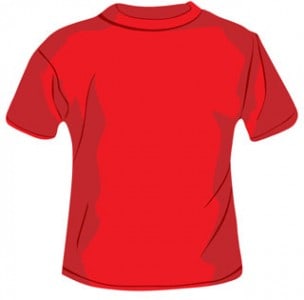How to Get a Medical Redshirt

Injuries are a fact of life in sports, but in college they carry extra weight. Serious injuries cause athletes to lose some of the precious time they have competing in college athletics. Time marches on, whether it’s the four seasons an athlete can play, the five-year clock in Division I, or the 10-semester/15-quarter rule in Divisions II and III.
The NCAA has a process for giving athletes back seasons they lose to injury. It is commonly called a medical red-shirt, but the technical term is a medical hardship waiver. A student-athlete’s school must apply for the waiver, and it can be granted or denied. Every waiver that meets the published criteria is granted, with rare exceptions.
Medical Hardship Requirements
To be eligible for a medical hardship waiver, a student-athlete has to meet the following criteria:
- The student-athlete must suffer the injury during one of their four seasons of college competition or during the senior year of high school.
- The injury must be incapacitating. That means it must be a season-ending injury.
- The injury must occur prior to the start of the second half of the season.
- The student-athlete must not have competed in more than 30% of the season or three contests, whichever is greater.
All of these must be proven with documentation. That means medical documentation to prove the injury and that it was season-ending and participation information to show that the student-athlete did not play in too many contests.
This documentation is normally pulled together by the compliance office and training room. Some conferences require the athlete to submit a statement or letter as part of the request. There are cases where athletes need to take a more active role though. Most common are when an athlete transfers before getting the waiver or when an athlete received a second opinion on an injury.
Regardless of how much work athletes need to do, here are some tips to make sure getting a season back goes smoothly:
Take Rehab Seriously
The medical documentation needs to show that an athlete was unable to return to competition for the rest of the season. If an athlete is missing appointments, not following the rehab program, or not getting evaluated as scheduled, it is harder for the school to prove the injury was season-ending.
Be Honest About Your Injury
This goes both ways. If you think you might be seriously hurt, it is better to know your options than to try and keep playing and potentially lose a season you could have gotten back. On the flip side, be careful about trying to nurse a minor injury to get a season back, since it might backfire.
Keep the Training Room Informed
It is important to make sure the training room knows all about your injury and treatment, but it goes doubly so if you plan to apply for a medical hardship waiver. Be sure to inform the training room about any second opinions, additional treatments, or other medications you might be taking. And bring a copy of all records so everything is in one place for the waiver.
Include Non-Sport Related Injuries and Illnesses
You can also get a season back based on an illness or injury that is unrelated to sports. If you become seriously ill or injure yourself outside of practice and games, follow these same tips just as if it had happened on the field.
Take Care of Business Quickly on Your End
If you do need to complete a task to help prepare your medical hardship waiver, make it a priority. Some conferences have time limits on when waivers can be submitted, plus delays will add to your stress. This is especially important for athletes nearing the end of their eligibility.
Medical Red-shirts and the Five-Year Clock
Athletes must keep in mind both the five-year clock and their four seasons of competition. Even if an athlete gets a medical hardship waiver, he or she needs to have time left on their five-year clock (10-semester/15-quarter clock in Divisions II and III) to use that season.
This is problematic for athletes took a normal redshirt season or sat out due to a transfer. An athlete can generally not use a medical redshirt in those cases unless they get a clock extension or sixth year waiver. To do that the athlete show they lost two seasons outside of his or her control. The medical redshirt would be one, but the athlete would still need to show another.
Finally, remember that getting the waiver is not the only consideration. The most important thing for an athlete is to get healthy and back out on the field again. Just because you might not qualify for a waiver is not an excuse to go back out there when you should not and risk losing the next season or your career.For that season, it is important that if an athlete redshirts or sits out after a transfer and it is at all possible that year might be used toward a sixth year, the athlete should document what happens during that year thoroughly. Make sure paperwork from injuries is in order, and keep up with rehab and doctors’ appointments. Any other hardship, like family financial difficulties, should be documented.
Do you have any questions about a medical redshirt? Leave them in the comments section below, or connect with us on Facebook, Twitter, or Google+!
Find opportunities for athletic scholarships and get connected to college coaches.
